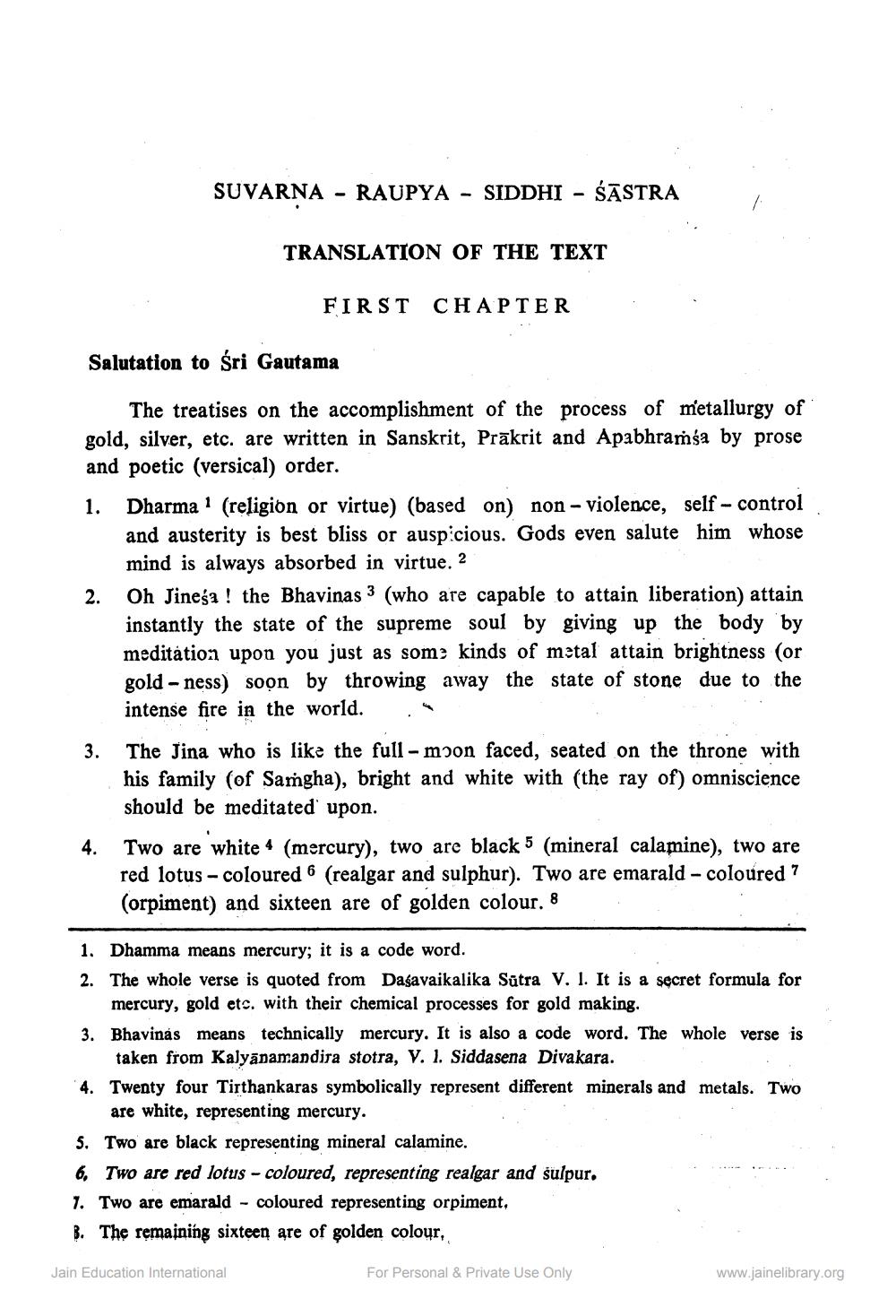________________
2.
3.
SUVARNA
4.
-
RAUPYA
-
Salutation to Śri Gautama
The treatises on the accomplishment of the process of metallurgy of gold, silver, etc. are written in Sanskrit, Prakrit and Apabhramśa by prose and poetic (versical) order.
1.
SIDDHI SASTRA
TRANSLATION OF THE TEXT
FIRST CHAPTER
Dharma (religion or virtue) (based on) non-violence, self-control and austerity is best bliss or auspicious. Gods even salute him whose mind is always absorbed in virtue. 2
Oh Jinesa! the Bhavinas 3 (who are capable to attain liberation) attain instantly the state of the supreme soul by giving up the body by meditation upon you just as some kinds of metal attain brightness (or goldness) soon by throwing away the state of stone due to the intense fire in the world.
Jain Education International
The Jina who is like the full-moon faced, seated on the throne with his family (of Samgha), bright and white with (the ray of) omniscience should be meditated upon.
Two are white (mercury), two are black 5 (mineral calamine), two are red lotus - coloured 6 (realgar and sulphur). Two are emarald - coloured 7 (orpiment) and sixteen are of golden colour. 8
1. Dhamma means mercury; it is a code word.
2. The whole verse is quoted from Daśavaikalika Sutra V. 1. It is a secret formula for mercury, gold etc. with their chemical processes for gold making.
3. Bhavinas means technically mercury. It is also a code word. The whole verse is taken from Kalyanamandira stotra, V. 1. Siddasena Divakara.
4. Twenty four Tirthankaras symbolically represent different minerals and metals. Two are white, representing mercury.
5. Two are black representing mineral calamine.
6. Two are red lotus - coloured, representing realgar and sulpur.
7. Two are emarald - coloured representing orpiment,
3. The remaining sixteen are of golden colour,
For Personal & Private Use Only
www.jainelibrary.org




